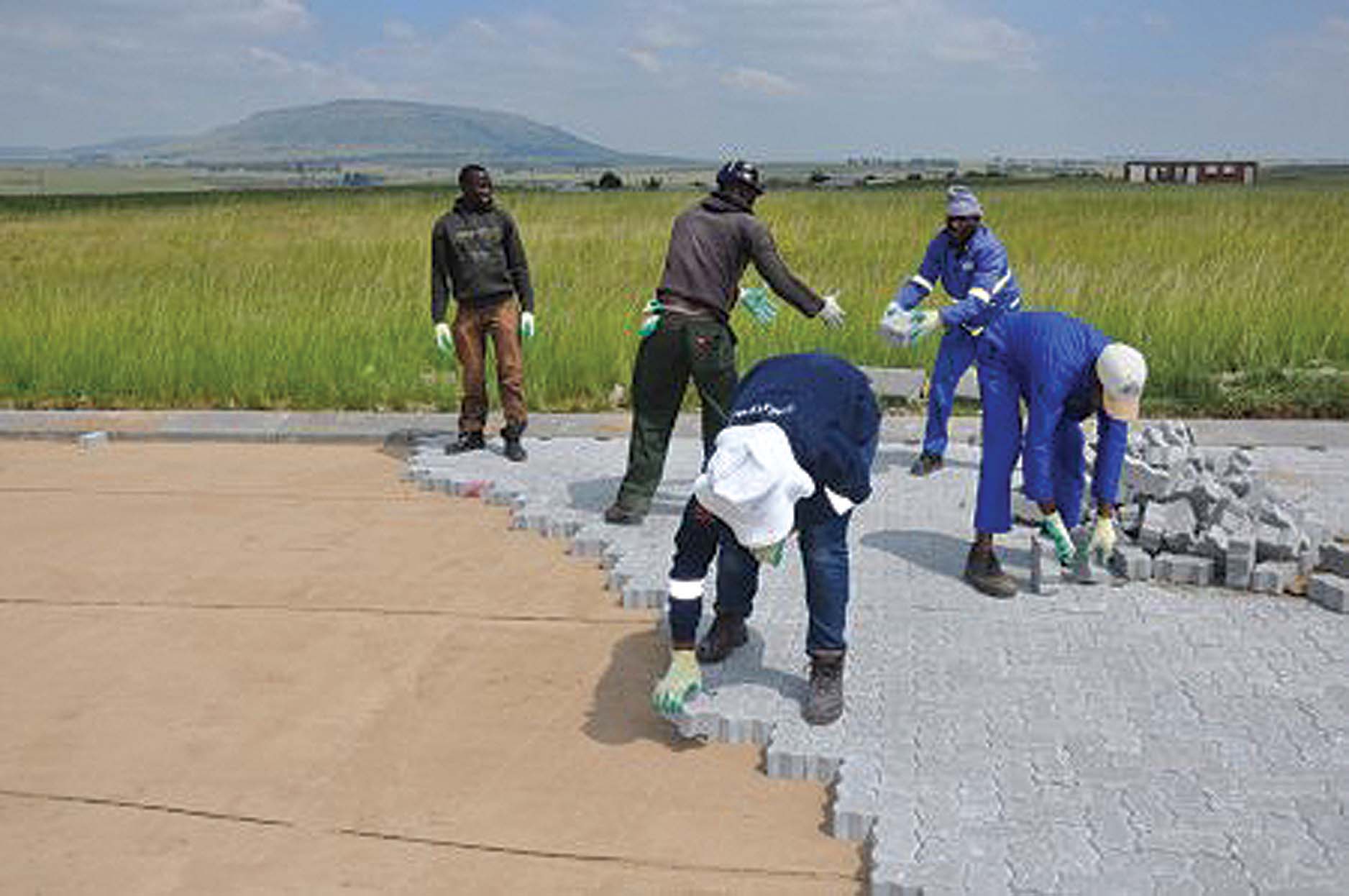
An upswing in new infrastructure worldwide means that demand for aggregates and therefore concrete is also increasing. Housing, non-residential, road, rail and bridges are among projects now under construction in many countries.
Indeed, statistics show that twice as much concrete is used in construction around the world than the total of all other building materials, including wood, steel, plastic and aluminium, and annual production is measured in billions of tonnes.
Reporting from Zambia, Shem Oriere says that the country is proceeding with its Pave Zambia project, involving upgrading of 2,000km of urban roads in ten provinces using concrete block paving (CBP), despite funding challenges which have held the project back for a couple of months.
The project is being implemented by Zambia’s Roads Development Agency (RDA) at the cost of $307 million (€226 million) over five years, and director and CEO Charles Mushota says the road paving with interlocking blocks is being piloted at 15 sites and will create an estimated 20,000 jobs.
The state agency has completed the process of procuring necessary equipment and manufacturing plants to enhance the implementation of the project, including 15 segmented paving block-laying machines along with 15 bowsers, 15 motor graders, 13 front loaders, 13 tipper trucks and 13 block-manufacturing plants.
RDA says the CBP is the cheapest technology for Zambia in achieving a better urban road network in the short-term, and Mushota claims that road construction using the system costs an average of $137,000-$271,000 (€130,000-€200,000) for every kilometre compared to bituminous surface roads which cost $634,000-$906,000 (€468,000-€668,000) for a similar distance.
RDA will source aggregates for the paving locally while
“This project comes against the backdrop of the poor state of most urban roads. A recent review of the condition of urban roads revealed that 60% of the urban road network is in poor condition,” says Loyce Saili, RDA’s spokesperson.
The project is part of Zambia’s ten-year Road Sector Investment Programme 2004-2015 which will cost the country an estimated $1.6 billion (€1.2 billion). The programme focuses on road maintenance and targets 40,454km which RDA says “is necessary for economic development.”
Rehabilitation and maintenance of Zambia’s 67,671km of gazetted roads between 2012-2016 requires an estimated budget of $4.5 billion (€3.3 billion).
In neighbouring South Africa, the Concrete Manufacturing Association (CMA) is campaigning for more usage of CBP in road improvement saying it is not only cheap to construct and maintain but also for its aesthetic designs and greater visual appeal.
CMA points to the just-completed 3km stretch of the Thambalihle-Vrede road in Phumelela Municipality as a good example of achieving better roads using CBP.
Flagg Consulting, the civil and structural engineering company involved in the concrete paving of the road jointly with main contractor Ramutsa Rail, says the CBP option is the best for budgetary-constrained local authorities in South Africa.
“The maintenance costs for well-constructed CBP roads are generally low,” says Sibeko Bonginkosi, the resident engineer for the Phumelela road paving project.
In a detailed report on CMA’s website, technical director Taco Voogt said: “CBP can help offset the current shortfall in asphalt supplies and CBP will continue to grow its market share of public road paving.
“Sustainability is the key to CBP’s growing acceptance as an alternative paving medium to asphalt,” he said.
“The initial capital outlay on CBP roads is only marginally greater than the asphalt equivalent and makes sense for all new urban road projects to be surfaced with CBP because the saving on maintenance would be huge and would very quickly offset any higher capital spend.”
He says the CBP option contributes significantly to road safety and gives the example of aquaplaning which he says “greatly reduced with CBP roads.”
“The 2-3mm water sheet often found on asphalt roads during heavy downpours is virtually non-existent, especially when the pavers are bevelled,” says Voogt.
“Permeable paving installations, which are specifically designed to soak up stormwater, are even more effective dispersing surface water and can be installed on sections of road where channels are likely to form.”
The CBP texture and broken surface “offers better braking, better road marking with coloured and luminous concrete pavers,” claims Voogt.
“They offer constant and maintenance-free signage, unlike painted surfaces which require regular maintenance.
“Intersections paved with CBP last longer. There is no noise factor. As a vehicle moves from a tarred to a CBP surface the change in roads noise can alert a driver that a crossing is imminent.”
The laying of utility cables is a major concern among many communication, power, and water utility companies because they at times have to tear through
“For CBP the individual blocks can be lifted and replaced with no visible sign of disturbance unlike tar surfaces which must be broken and then patched.”
Though the technology is currently used on a limited scale by road agencies in Africa, the low-cost outlay and sustainable nature of the innovation, CBP could soon offer a solution to the poor road network in the region.














